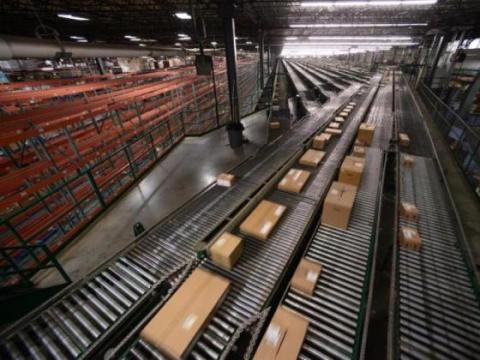Image


Digital transformation efforts in the supply chain will accelerate in 2022 and beyond, despite disruption issues.
That’s according to a new report, “IDC FutureScape: Worldwide Supply Chain 2022 Predictions,” which expects IT spending to accelerate, with technology viewed as a way to mitigate many of the business processes or labor shortages that are affecting supply chains today.
While some businesses had to reduce IT spending in the short term to survive supply and/or demand shocks in the early stages of the COVID-19 pandemic, IDC has seen a robust resumption of spending in the supply chain in 2021. The firm said it fully expects that digital transformation efforts in the supply chain will persist, and even accelerate, with companies making supply chain investments during 2022 and the following years.
Here are IDC’s worldwide supply chain predictions for 2022 to 2026.
1. By the end of 2022, half of all manufacturing supply chains will see the benefits of supply chain resiliency, resulting in a 10% reduction in disruption impact.
2. By 2023, 50% of all supply chain forecasts will be automated through the use of artificial intelligence, improving accuracy by five percentage points.
3. By 2024, to improve long-term supply chain profitability, 70% of manufacturers in global supply chains will invest in software tools to support sustainability and circular economy business models.
4. By 2025, 30% of all direct procurement transactions will be based upon capacity availability instead of units or volume.
5. Resulting from pressure to improve service, by 2026, 60% of Forbes Global 2000 original equipment manufacturers will establish a service parts control tower approach, increasing first-time fix by 35% and shrinking spares inventory by 12%.
6. By the end of 2022, chronic worker shortages will prompt 75% of supply chain organizations to prioritize automation investments resulting in productivity improvements of 10%.
7. To improve delivery speed, agility, and visibility for business-to-business and business-to-consumer customers, 35% of manufacturers will invest in order management software by 2024, resulting in a 25% improvement in on time and in full (OTIF) fulfillment.
8. By 2025, 40% of Forbes Global 2000 organizations will invest in supply chain systems to increase information and inventory velocity to improve last-mile delivery efficiency and boost customer experience.
9. By 2026, as part of long-term resiliency planning, 30% of logistics companies will have geo-diversified their manufacturing hubs and suppliers to supplement current supply chain operations.
10. By 2024, the adoption of cloud in the supply chain will grow by 25 percentage points, driven in part by the presence of cyberthreats.
"Disruption has been front and center again in 2021 and has largely validated the supply chain transformation journey that so many companies are on,” said Simon Ellis, program VP, global supply chain strategies at IDC. “In fact, companies that have aggressively pursued business transformation are outperforming those that have not. The supply chain will continue, must continue, on its journey of almost unparalleled levels of change with digital transformation at the center of efforts to both improve efficiency and effectiveness and be resilient to further, inevitable disruption."
Source: https://chainstoreage.com/idc-top-supply-chain-predictions-2022-2026